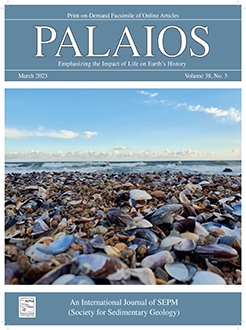The sedimentary environments and redox conditions of the Lower Triassic Osawa Formation in the Southern Kitakami Terrane were reconstructed based on lithofacies, trace fossils, and other paleontological content. The muddy and sandy lithofacies of the Osawa Formation lack evidence of storm waves despite the presence of storm-induced turbidites, suggesting that the oldest deposits of the Osawa Formation were deposited in the proximal part of the outer shelf. In turn, water depth increased from the lower to upper part of the formation, ultimately recording the distal part of the outer shelf. In addition to sandy lithofacies caused by turbidity and traction currents, multiple sandy layers within the muddy lithofacies would have originated via supply into the prodelta setting from a fan delta system. Collapses of the delta front or river system floods could have generated hyperpycnal flows, resulting in abundant supplies of mud and organic matter. Trace fossil analyses revealed that the degree of bioturbation (ichnofabric indices) dramatically decreased as water-depth increased, indicating a steep oxic-dysoxic gradient along the onshore-offshore transect. Diagenetic pyrite framboids indicative of dysoxic/anoxic benthic conditions are abundant at greater water depths. Abundant pyrite framboids less than 6 µm in diameter suggest intermittent euxinicity. With an increase in global weathering, abundant sediment supply including organic matter from the fan delta system could have contributed to the development of ocean redox stratification, which appears to have impacted on the adaptation of both nektic and benthic animals of this area during the Early Triassic.
How to translate text using browser tools
3 May 2023
SEDIMENTARY ENVIRONMENT AND REDOX CONDITIONS OF THE LOWER TRIASSIC OSAWA FORMATION IN THE SOUTHERN KITAKAMI TERRANE, JAPAN: INSIGHTS INTO OCEAN REDOX STRATIFICATION AND FAUNAL RECOVERY
Yoshino Ishizaki,
Yuta Shiino
ACCESS THE FULL ARTICLE
It is not available for individual sale.
This article is only available to subscribers.
It is not available for individual sale.
It is not available for individual sale.
<
Previous Article
|

PALAIOS
Vol. 38 • No. 4
April 2023
Vol. 38 • No. 4
April 2023




